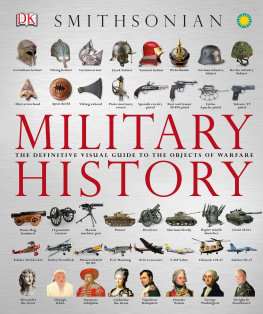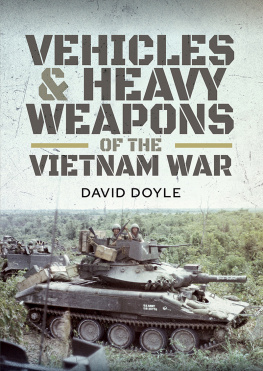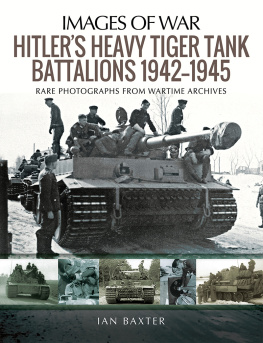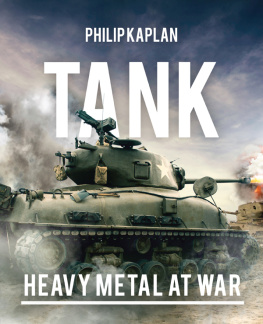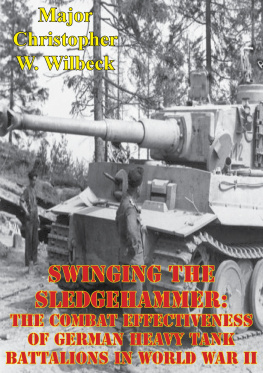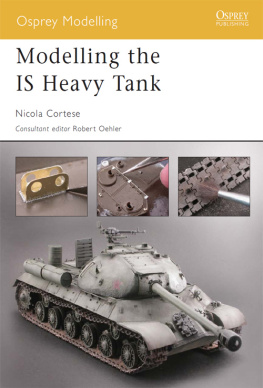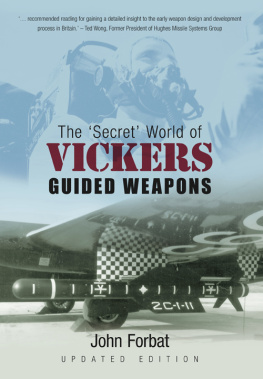Dick W. Kerry - Hard History of the USSR Heavy Tank KV “Klim Voroshilov”: Weapons and military equipment of the world
Here you can read online Dick W. Kerry - Hard History of the USSR Heavy Tank KV “Klim Voroshilov”: Weapons and military equipment of the world full text of the book (entire story) in english for free. Download pdf and epub, get meaning, cover and reviews about this ebook. year: 2020, genre: Romance novel. Description of the work, (preface) as well as reviews are available. Best literature library LitArk.com created for fans of good reading and offers a wide selection of genres:
Romance novel
Science fiction
Adventure
Detective
Science
History
Home and family
Prose
Art
Politics
Computer
Non-fiction
Religion
Business
Children
Humor
Choose a favorite category and find really read worthwhile books. Enjoy immersion in the world of imagination, feel the emotions of the characters or learn something new for yourself, make an fascinating discovery.

- Book:Hard History of the USSR Heavy Tank KV “Klim Voroshilov”: Weapons and military equipment of the world
- Author:
- Genre:
- Year:2020
- Rating:4 / 5
- Favourites:Add to favourites
- Your mark:
- 80
- 1
- 2
- 3
- 4
- 5
Hard History of the USSR Heavy Tank KV “Klim Voroshilov”: Weapons and military equipment of the world: summary, description and annotation
We offer to read an annotation, description, summary or preface (depends on what the author of the book "Hard History of the USSR Heavy Tank KV “Klim Voroshilov”: Weapons and military equipment of the world" wrote himself). If you haven't found the necessary information about the book — write in the comments, we will try to find it.
Dick W. Kerry: author's other books
Who wrote Hard History of the USSR Heavy Tank KV “Klim Voroshilov”: Weapons and military equipment of the world? Find out the surname, the name of the author of the book and a list of all author's works by series.
Hard History of the USSR Heavy Tank KV “Klim Voroshilov”: Weapons and military equipment of the world — read online for free the complete book (whole text) full work
Below is the text of the book, divided by pages. System saving the place of the last page read, allows you to conveniently read the book "Hard History of the USSR Heavy Tank KV “Klim Voroshilov”: Weapons and military equipment of the world" online for free, without having to search again every time where you left off. Put a bookmark, and you can go to the page where you finished reading at any time.
Font size:
Interval:
Bookmark:
Hard History of the USSR Heavy Tank KV Klim Voroshilov
Weapons and military equipment of the world
Dick W. Kerry
All rights reserved
Dick W. Kerry, 2017
None of the parts of this book cannot be copied without the consent of the author or the right holders
Fotos by:
Jim Thorston
Daniel Smith
Gina Smith
Tanya Dolski
Sam Sanderson
Chris Parkinson
This book is devoted to the history of the creation of a heavy tank "Klim Voroshilov." After a long path of modernization, it turned out to be one of the best fighting vehicles in the Soviet Union. Here you can learn about the history of its creation and also compare the various modifications of the tank.
Content:
Intro
In 1939 - 1945 the tanks played a decisive role on the battlefields of the Second World War. Tank connections were the main striking force of the armies of countries that took part in the war and were actively used on all fronts of the fighting. It was the tank troops in the Second World War that began to play a major role on the battlefields.
Along with aviation and artillery tanks were one of the decisive factors to achieve victory in the rapid offensive operations that were conducted throughout the war by the troops of Germany, the USSR, the United States and Britain. A decisive breakthrough in a certain sector of the front with the subsequent resolution of major strategic tasks without the use of tanks was simply impossible. In the Second World War, tank troops were mobile mobile units of the army. But only by acting large forces the tanks could achieve impressive results.
The first to realize this was the German generals. Talented German commanders such as General Guderian and Manstein, using large tank groups, solved complex tasks with limited forces, having managed to defeat the Polish army in two weeks, and then in a little more than a month to defeat France and press the Anglo-French forces against Dunkirk, opponents crushing defeat. Tank troops were a means of making quick strikes on the selected sector of the front, and not letting the enemy come to their senses, conducting bold operations on the encirclement of its forces. The massive blows of the tank forces became the hallmark of all the serious offensive operations of the period of 1939 - 1945.
KV was really an outstanding Soviet heavy tank of the initial stage of the war. In 1939 - 1942, the likely opponents of the USSR did not have such armored combat vehicles. The variety of powerful weapons - from a 76-mm gun to a 152-mm howitzer, made KV a terrible enemy for German technology in 1941, which often could not hit the Soviet steel monster even on the side. In 1940 - 1942, about 2,800 tanks were produced. Given the fact that Germany at that time did not possess a single combat vehicle at least as comparable to the "KV" in armor and firepower, this tank together with the T-34 could seriously affect the outcome of the tank battles of 1941, but this for many reasons did not happen.
The way to the first tanks KV

Development of heavy tank designs - promising projects
The development of projects for heavy tanks KV-1 and KV-2, however, as well as the average T-34, was based on the experience gained by the Red Army in the 1930s when operating both light T-26 tanks and heavier T- 28 and T-35. The current idea that these tanks had limited combat capability is based mainly on the experience of the German Wehrmacht, who collided with these machines in 1941. However, such a representation is incorrect.
All the major Soviet tanks of the early 1930s-the T-26, T-28 and T-35, were the most modern concepts in which various advanced achievements of tank building in other countries were widely used. And the German Wehrmacht of that time experimented with a large number of similar designs, which in the end were deemed unsuccessful. As an example is a heavy multi-tower "Neubau-fahrzeug".

The multi-tower T-35 tank was recognized as the command of the Red Army by a dead-end machine. Many designers and military men came to the same conclusion in other countries. Already in 1935, the armor and armament of the T-35 tank were considered absolutely inadequate in the conditions of a modern maneuver war. As a result, in July 1937, plant No. 183 received an assignment for the modernization of the T-35 tank, according to which it was planned to increase the thickness of armor from 40 mm to 75 mm with an increase in the mass of the tank to 60 tons. However, the designers soon realized that following these requirements would turn the tank into a completely useless vehicle. In the end, this project was closed.
It is interesting to compare the armored forces of the Red Army with the German "Panzertruppe" (armored forces of the Wehrmacht). On both sides in the second half of the 1930s, various concepts for future action on the battlefields of Europe and the corresponding new tactics were developed. While the tactic Blitzkrieg was created in Germany with the use of light armored vehicles on the spearhead with their support of heavier-armed units, the idea of light and highly mobile reconnaissance and offensive forces was developed in the Soviet Union (light tanks BT-2, BT-5, BT- 7 and T-26) and in addition to them, the creation of separate strike units armed with T-28 and T-35 tanks, and later KV-1 and T-34.

In 1939-1940 the concept of "Blitzkrieg" was developed and worked out by the Wehrmacht in campaigns in Poland, France and the Balkans. However, the first few months of Operation Barbarossa in 1941 showed the shortcomings of such tactics. Despite the fact that the machines the Wehrmacht tanks encountered, such as the T-26 and T-35, had already had limited combat capability, more modern tanks such as KV and T-34 were unpleasant surprises for the Germans.
However, the price that had to pay for deterring the enemy was extremely high for the Red Army. Losses in tanks and other armored vehicles, the data about which are available at present, reach an incredible size. Nevertheless, the concept of creating heavy tank units, which would have armed tanks of modern designs, prevailed. Later, the German Wehrmacht also had to recognize the effectiveness of this idea.
As a result, work was accelerating in Germany to create new tanks, as a result of which the tank "Tiger" and "Panther" appeared. The idea of using heavy tanks in the Red Army was somewhat ahead of its time - having suffered from shortcomings in tactics, poor planning, hasty reorganizations that determined the losses and defeats of 1941, nevertheless, later it served as the foundation for the victory of the Soviet troops.

Way to KV
The design of the T-35 tank with enhanced armor after the tests was closed, and the designers began searching for a completely new concept of a heavy tank. Since the plant No. 183 was overloaded with work, in April 1938, the task of designing a new tank was assigned to SKV-2 (which was headed by J. Ya. Kotin) of the Leningrad Kirov Plant (LKZ) and SKV-1 of the Leningrad Plant No. 185, Kirov. Two alternative heavy vehicle designs were developed in these design bureaus: the SMK tank (Sergei Mironovich Kirov) in SKV-2 and the T-100 tank in SKV-1. In early October, after consideration by the special commission of mock-ups and drawings of both tanks, it was decided to build prototypes (two units each).
Next pageFont size:
Interval:
Bookmark:
Similar books «Hard History of the USSR Heavy Tank KV “Klim Voroshilov”: Weapons and military equipment of the world»
Look at similar books to Hard History of the USSR Heavy Tank KV “Klim Voroshilov”: Weapons and military equipment of the world. We have selected literature similar in name and meaning in the hope of providing readers with more options to find new, interesting, not yet read works.
Discussion, reviews of the book Hard History of the USSR Heavy Tank KV “Klim Voroshilov”: Weapons and military equipment of the world and just readers' own opinions. Leave your comments, write what you think about the work, its meaning or the main characters. Specify what exactly you liked and what you didn't like, and why you think so.


